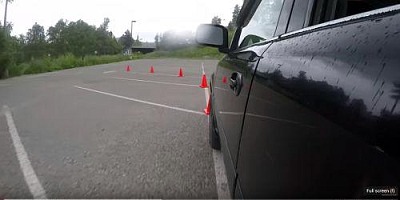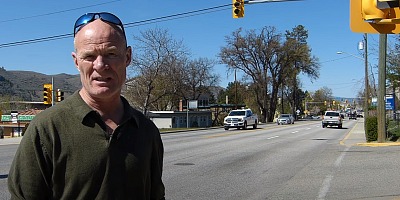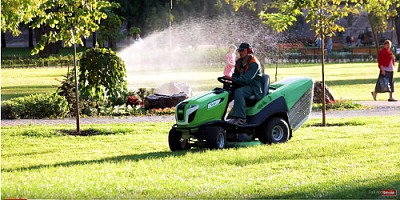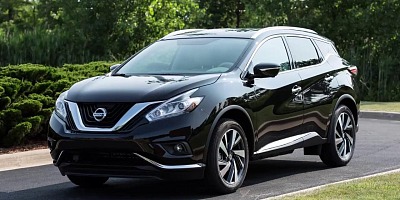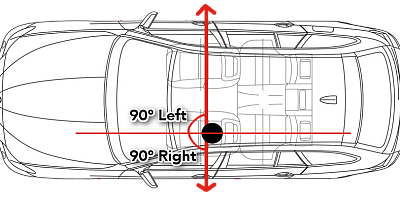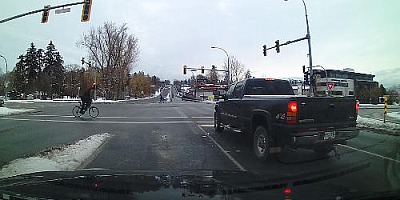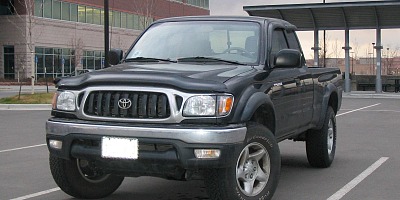Parallel park your pickup truck, van, or SUV perfectly!
How to Parallel Park a Large Vehicle for a Driver's Test
Closed Caption
Introduction
- Hi there smart drivers, Rick with Smart Drive Test, talking to you today about how to parallel park a large vehicle.
If this is all you have access to for the purposes of your driver's test, I borrowed my friend's Dodge Ram 2500.
Huge vehicle, probably twice the size of the Buggy (1998 Honda CRV).
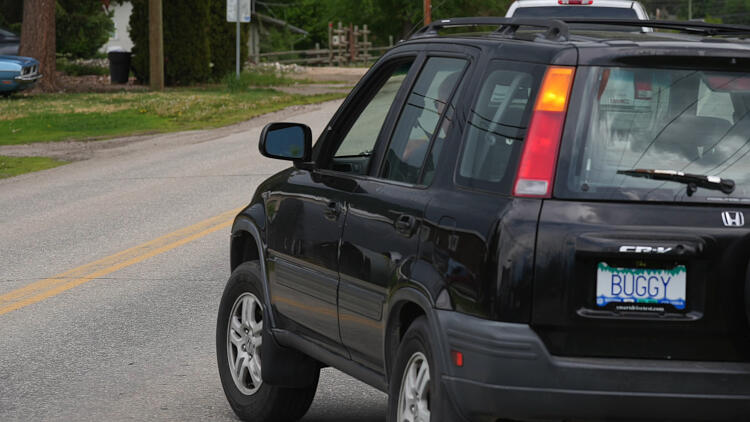
All the fundamentals are essentially the same.
I'll put a card up in the corner for you if haven't seen the basic parallel park video already.
The 45° degree landmarks looking out the back corner of the vehicle and how far you pull into the space.
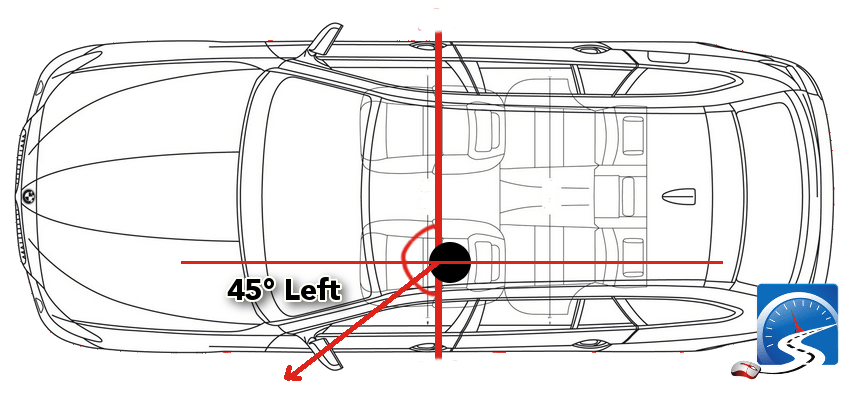
The difference with this is you got bigger blind areas.
The nice thing about these bigger vehicles, most of them are going to have convex mirrors.
If you don't have convex mirrors on your larger vehicle, get those, I'll put a link down in the description where you can get those and order those, put them on your vehicle.
They will really, really help you out in terms of how close you are to the curb and checking your blind spots.
The other thing with this truck as well, it has a backup camera.
Backup cameras are really great because you can barely see out the back window because this truck has a toolbox in in the bed of the pickup truck.

So all those things, you still have to look out the back window when you're backing up.
But you can use the backup camera to make sure that you're safe and navigate those larger blind areas around the vehicle.
So let's hook up the cameras.
Let's get started.
Parallel Park #1
Okay, so we're about half a block away from the vehicle that we're going to parallel park beside.
So we put our signal on as we're approaching.
Slow down as we're beside it, about three feet from the other vehicle, I pull up until I can see the back corner of that vehicle out the back window here on the vehicle into reverse, which lets traffic behind me know that I'm parallel parking.
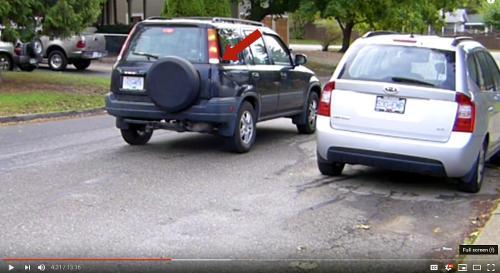
Take a moment, pick my 45° which is the tree and I back up, I turn my steering wheel all the way to the right, all the way to the right until I'm facing the 45° degree right there.
So now I bring my steering wheel back to straight and I back up until the corner of that vehicle is just past the post there, looking my backup camera, checking my mirrors.
And it's right there.
And I turn my steering wheel all the way to the left and come into the space.
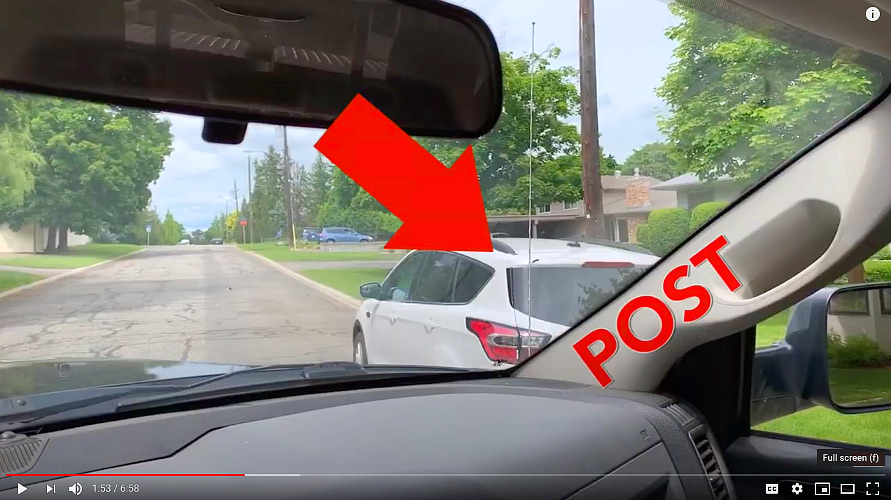
And right there, I'm straight, bring my steering wheel back to straight, into drive, and I pull forward until the top of the hood is just even with the bottom of the windshield on the vehicle in front of me, it's an SUV and that's what I want to do.
Secure the Vehicle
So into park, parking brake on and let the foot brake go.
And say tothe examiner: "okay, I'm finished.
And the examiner will open the door and look and see how far you are, and I'm about eight inches from there.
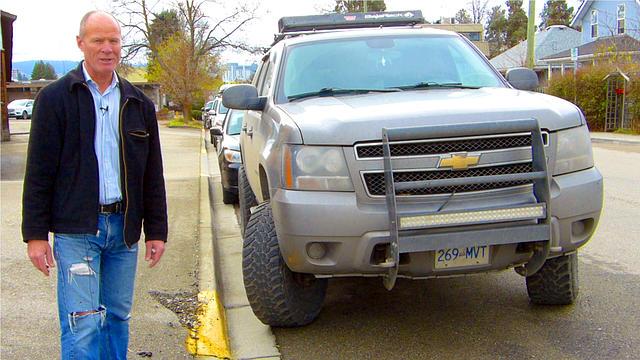
You can see that in the camera off the side there.
And that's how you parallel park, so you now you get pretty to go.
Leaving the Space
Put the vehicle into reverse, release the parking brake, and we check our backup camera, we check out the back and we look and we make sure that we see keep the wheel straight and we back up until we can see the bumper of the vehicle in front over the top of the hood.
Into drive, signal left. 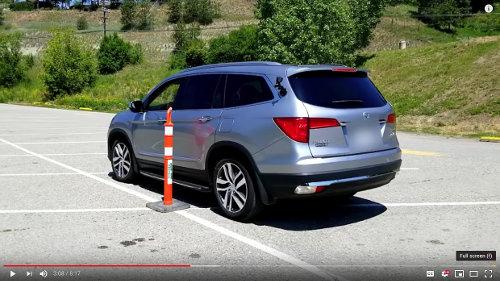
Shoulder check the left, check our mirrors, and shoulder check again just before leaving and we pull out and we go.
And know that for the purposes of parallel parking a larger vehicle, you're going to need a very big space.
And for the purposes of a road test, it's unlikely that they're going to get you to parallel park between two vehicles because you just need a lot of space.
You probably need two and a half parking spaces with a vehicle this size.
Parallel Park #2
So we pull up three feet from the vehicle there, nice and slow three feet away, back corner of the vehicle right there.
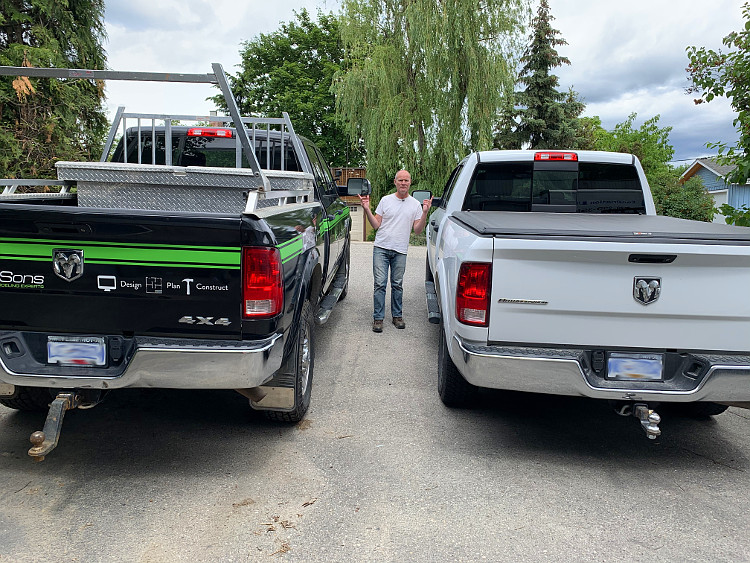
Signal along into reverse right away.
So the cars behind us know we're backing up.
45° degree angle is the red tree, all the way to the right.
Facing my tree right there.
Wheel straight, back up until the front corner goes past the post.
Right there, we check her convex mirror, we're good, all the way to the left.
And we're in the space.
Into drive, move forward, straighten the wheel out right there.
And we stop, secure the vehicle parking brake on, release the foot brake, and we're parked.
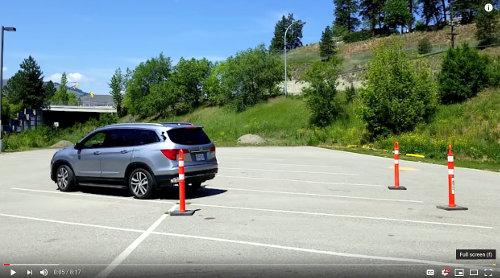
Examiner will open the door, check how far you are from the curb.
We're very close.
We're like four inches from the curb.
You can see that in the convex mirror.
The examiner says you're good to go, we go.
Okay, so we put our foot on the foot brake into reverse, release the parking brake, check the backup camera, check behind us, check both our mirrors and we back up, we find it's good.
And we back up until we can see the bumper on the vehicle in front over the top of the hood.
Into drive, left signal on shoulder check, checking our mirror and shoulder checking again and we proceed, and it's that easy.
Smart Points to Remember
Pickup trucks are not ideal for a driver's test because of the increased number of blind areas you'll have around your vehicle.
But if this is what you have to work with, then you have to work with your pickup truck or your larger SUV, or whatever vehicle you have access to for the purposes of your driver's test.

Keep all the points in mind, good scanning, observation, 360° degree scan before you back up, you know, basic parallel parking landmarks that you're going to be looking for when you're pulling up beside the other vehicle.
And again, I'll put the card up in the corner for you there, have a look at that video.
And that'll give you more specifics about the fundamentals of parallel parking.
Fail Driver's Test
And because these have bigger blind areas, most of these larger vehicles are going to have convex mirrors.
Use the convex mirrors to figure out how close you are to the curb.
By looking in the convex mirrors, you're not going to strike the curb.
Because if you strike the curb or knock the examiner out of his or her seat, that's an automatic fail on a road test.
If you touch the curb and adjust, then that's okay.
So know that for the purposes of your driving test.

Consider Going With Driving School
Consider going with a school and using their vehicle because it's going to be easier for you.
Big pickup trucks, trying to back them into parking spaces, trying to do three point turns and whatnot is going to be more difficult.
If you have any questions or whatnot, leave me a comment down in the comment section there, will help you out with your parallel parking in a larger vehicle.
How to Parallel Park With Pylons.
And to subscribe, click here and remember, pick the best answer and necessarily the right answer.
Have a great day, bye now.

